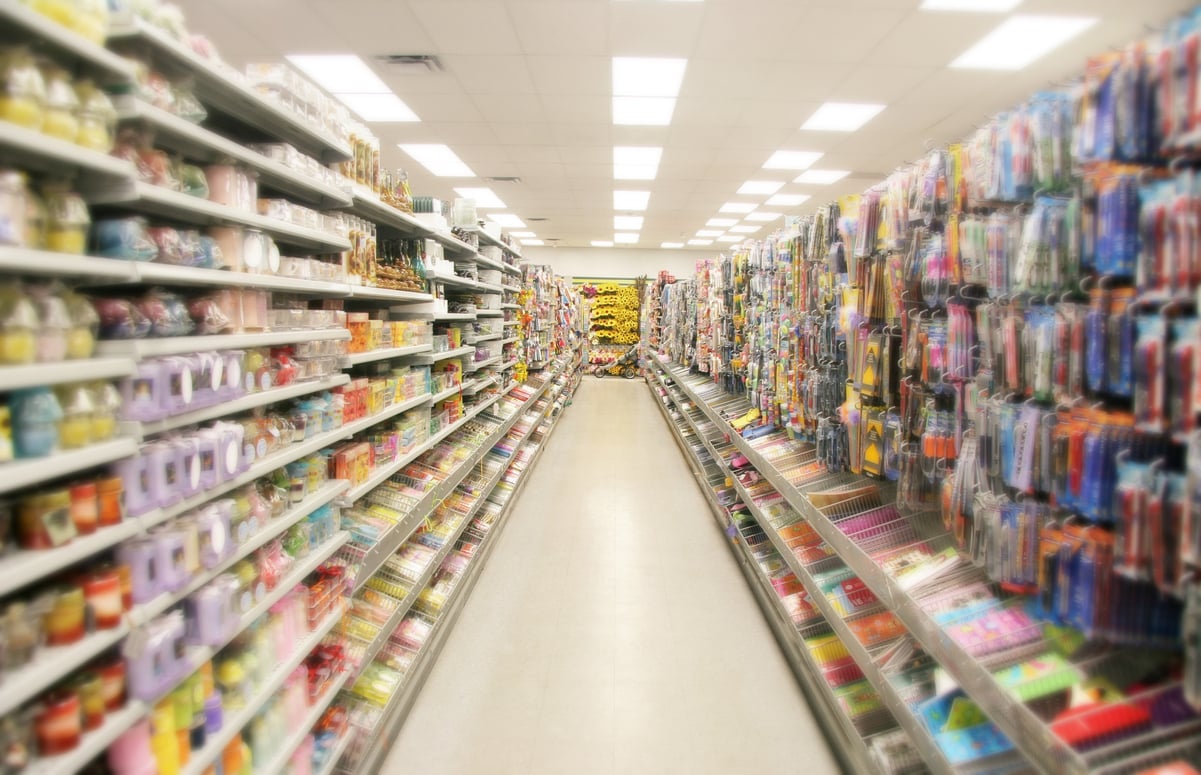After Dollar General Corporation's (DG +0.89%) fiscal fourth-quarter 2017 results were released in March, I discussed five methods the dollar retailer is utilizing in 2018 to improve gross margin. Six months later, gross profitability remains a bit sluggish.
In Dollar General's fiscal second quarter of 2018, gross margin dipped 7 basis points, to 30.6%. However, given the current competitive retail environment, maybe a flat margin performance should be lauded. Let's check back in on management's various initiatives and gauge the company's progress against its own goals.
A focus on inventory shrink reduction
Earlier this year, Dollar General maintained that it would double its EAS (electronic article surveillance) capability from 5,000 to 10,000 stores in 2018, in order to combat theft-related inventory shrink (i.e., wastage or loss). As of the second quarter of the fiscal year, management confirmed that it now has EAS technology installed in roughly 10,000 locations.
CEO Todd Vasos characterizes shrink reduction as Dollar General's largest immediate gross margin opportunity. He also noted during the company's second-quarter earnings conference call that it's reducing shrink while improving on-shelf availability of products, a sign of admirable inventory management.
Improving transportation efficiency
As I discussed this spring, higher product shipping costs have recently cut into retailers' profits, and in response, Dollar General has employed a multi-faceted approach to improving transportation efficiency. The company's solutions include truckload optimization and the trimming of "stem miles" -- i.e., miles a truck must travel before reaching its intended delivery route.
Dollar General also is expanding its fleet of private trucks to gain a cost edge. As of the second quarter, the company remains on track to widen its private fleet from 80 tractors at the end of fiscal 2017 to 200 by the current fiscal year's end.
The dollar-store giant has invested in distribution infrastructure to improve the efficiency of its network. New distribution centers under construction in Longview, Texas and Amsterdam, New York will launch in calendar year 2019. CEO Vasos observed in the recent earnings call that the new distribution points will help decrease trucking stem miles.

Image source: Dollar General.
Private-label emphasis shifts to new categories
Dollar General sells roughly one-fifth to one-fourth of its merchandise under private labels in a given quarter. These products tend to carry a higher margin versus name-brand products. So far this year, the company has focused private-label expansion in beauty products, as well, as its new "Better-for-You" initiative launched just a few months ago.
The Better-for-You project attempts to offer clean-label products and healthier foods to the company's customers, and shareholders may be surprised at how quickly the program has scaled. Already in over 2,000 stores, Better-for-You spans 125 products, including 40 food items under Dollar General's new wellness private label, "Good and Smart."
Amplifying the selection of such goods seems a savvy action, as the lower-income customers who make up Dollar General's core customer base are traditionally underserved in areas such as clean-label packaged foods.
Diversifying global sourcing and implementing damage control
Well before the Trump administration imposed tariffs on Chinese goods (and before China imposed retaliatory tariffs), Dollar General had concluded that it was too "China-centric" in its product sourcing, as smaller emerging-market economies have increasingly dampened China's low-cost manufacturing advantage. Earlier this year, Vasos estimated that Dollar General could shave $4 billion to $5 billion off its cost of goods sold annually by exploring new exporter relationships.
Recently, the company's tone on sourcing has turned cautious, and management's attention has shifted to mitigating any tariff-related impacts on its imported product costs. Dollar General continues to implement a global sourcing diversification strategy. But more immediately, management is working with vendors to find ways to absorb margin slippage on any affected goods caught in the crossfire of U.S.-China trade disputes.
Expansion of a "treasure hunt" initiative
While gross margin can be improved by reducing costs, it also can be amplified by introducing incrementally higher price points into the overall product mix. In the current fiscal year, Dollar General is testing a "treasure hunt" initiative in which new non-consumable products are introduced frequently to stoke customer curiosity and attract return visits. Treasure hunt products are displayed in high-traffic areas within stores to induce impulse purchases.
Management has indicated that the program won't alter the company's overall pricing dynamic in which at least 80% of SKUs (stock-keeping units) are priced at $5 or below. However, a successful dry run could lead to a more profitable ongoing product mix for the retailer.
So far, executives haven't commented at length on the project, except to note that its fiscal second-quarter launch included 300 stores and that initial non-consumable product lines include "home, domestics, housewares and party and occasions." The test will expand to include 700 stores by fiscal-year end.
In a related endeavor that also involves impulse appeals, the company has now retrofitted 6,800 stores with "enhanced queue lines." The enhanced lines essentially put impulse point-of-sale products within easy reach as customers wait in the checkout line, a strategy employed successfully by both grocery stores and clothing retailers. Management is aiming to extend this gross margin enhancement opportunity to 7,500 stores by the end of fiscal 2018.
So, is Dollar General making progress?
The initiatives we've revisited above clearly aren't designed as short-term fixes, though they're apparently generating modest immediate benefits. Considering the company's structural changes like EAS implementation, its investment in transportation efficiency, and sourcing diversification, as well as more experimental margin projects such as cleaner label private goods and the introduction of impulse-purchase hooks, Dollar General indeed appears to be progressing in its goal to add several percentage points of gross margin to results in future quarters.






